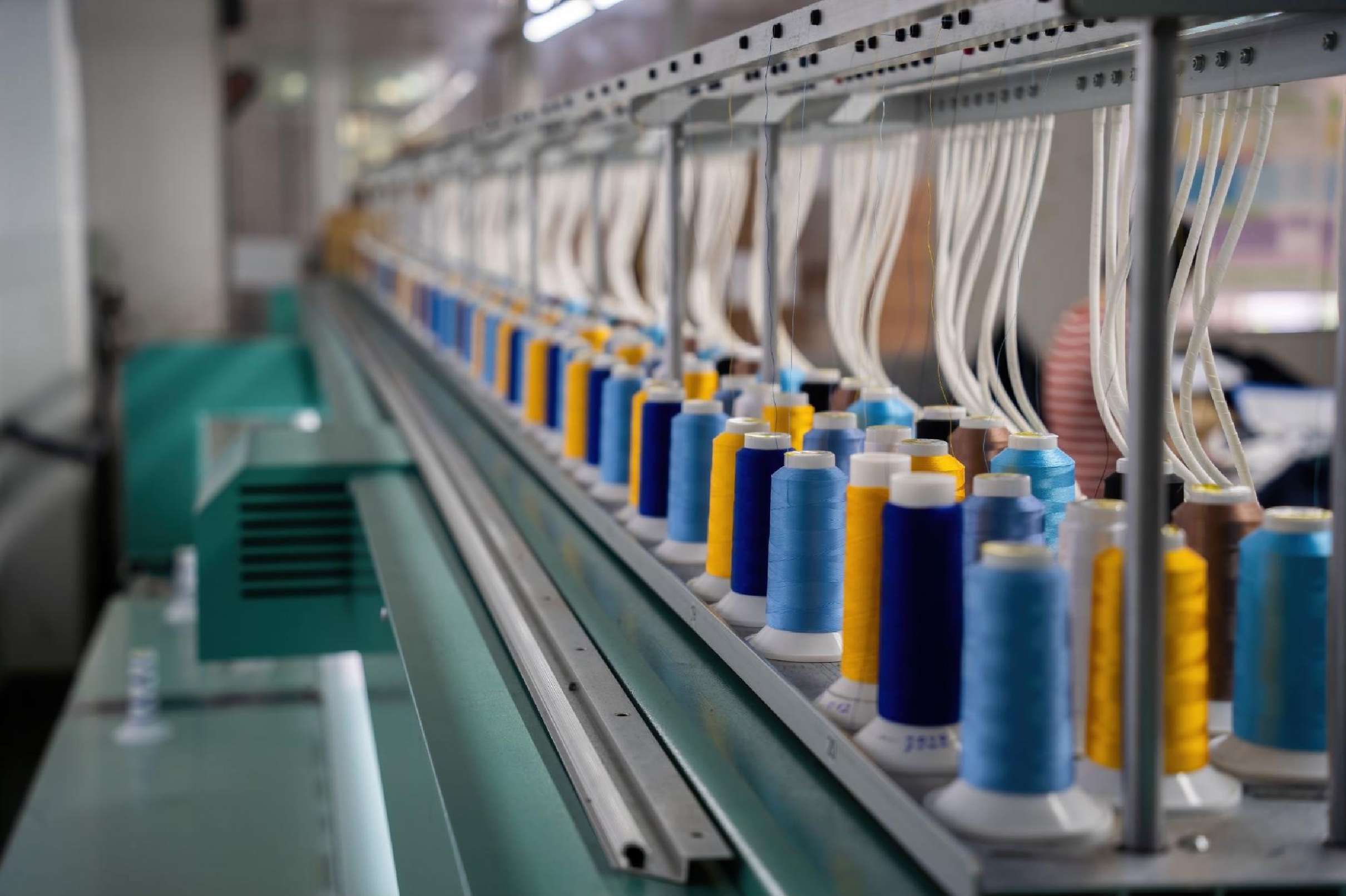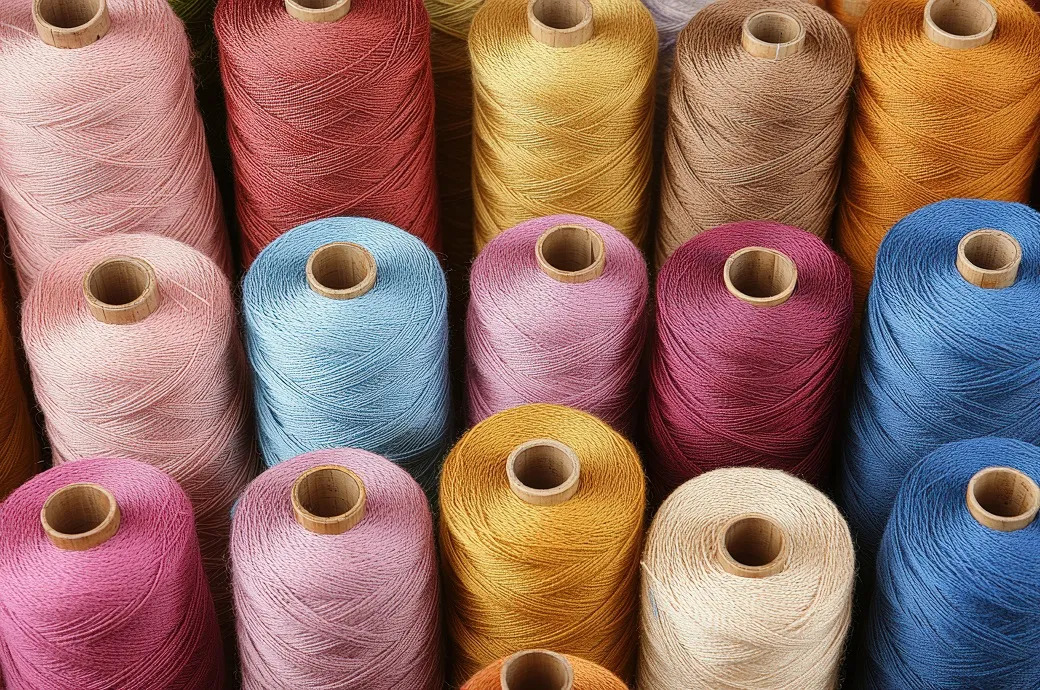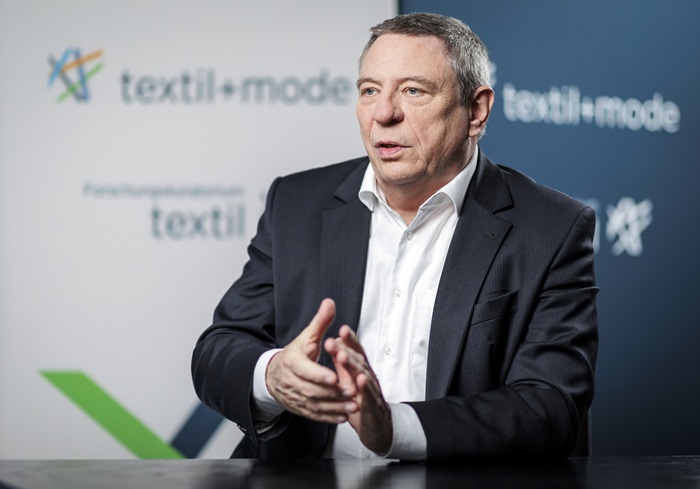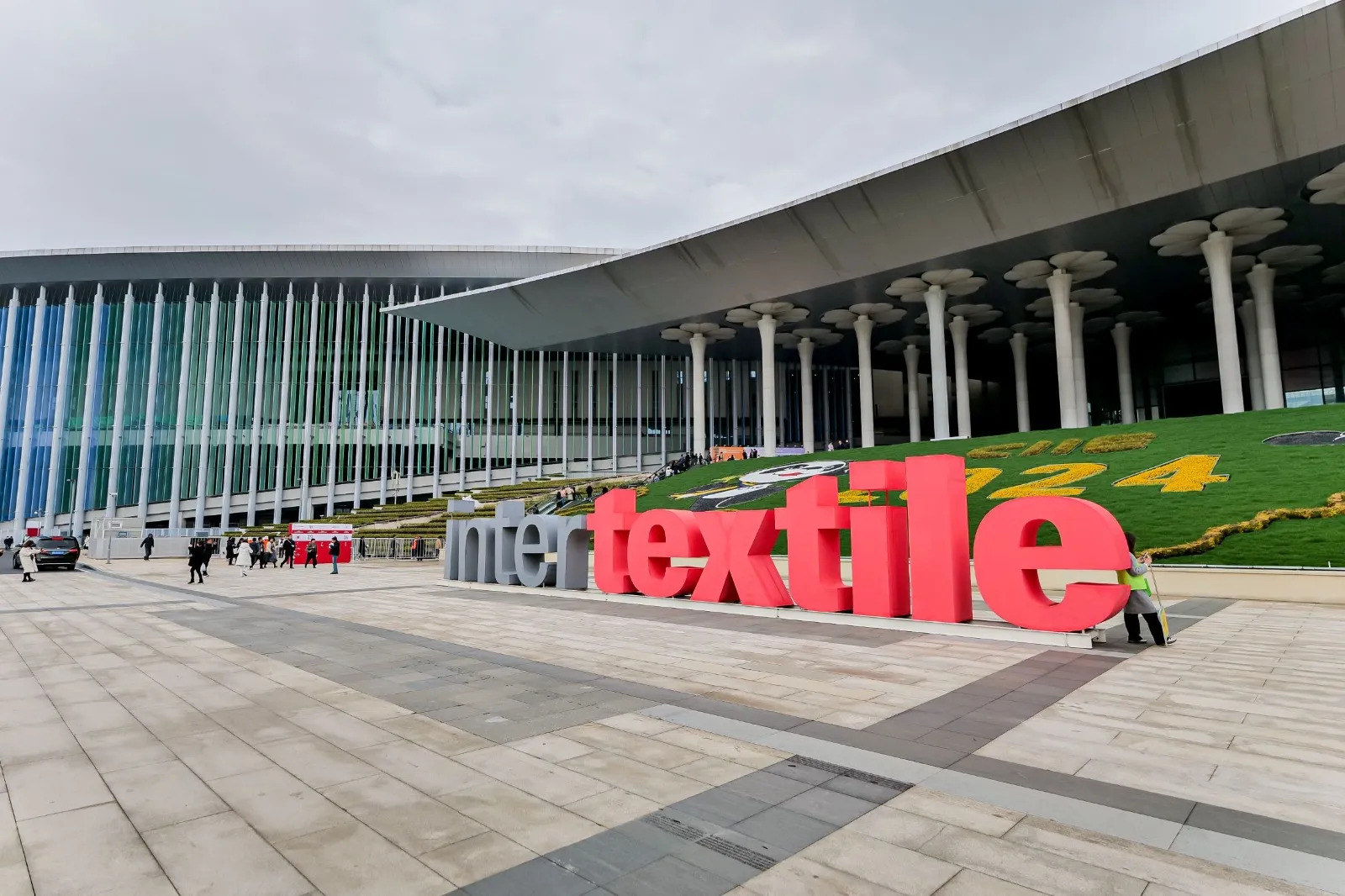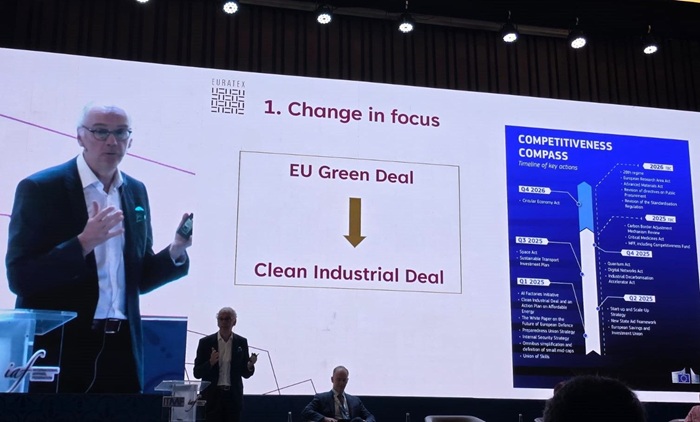FW
The Swiss Textile Machinery Association has appointed Davide Maccabruni, CEO of Uster Technologies AG, as its new president during its general assembly on May 8. Maccabruni succeeds Ernesto Maurer, who served as president for the past decade and has played a pivotal role in enhancing the industry's innovation and global presence.
Maccabruni brings a strong vision for the future, emphasizing the need for collaboration and alignment within the sector. “The Swiss textile machinery industry still holds unique strengths that can secure its success well into the future. To achieve this, however, we must focus on aligning our capabilities, working together, and supporting one another,” he stated.
Joining Maccabruni on the board is newly elected member Martin Zurcher of Heberlein Technology AG. The board also includes Beat Meienberger (Benninger AG), Andre Imhof (Autefa Solutions Switzerland AG), Andreas Conzelmann (Jakob Müller AG), and Ralph von Arx (Retech AG), who takes on the role of vice-president.
Founded in 1940, the Swiss Textile Machinery sector is the oldest industry group within Swissmem and represents 42 companies involved in manufacturing textile machines, components, and services. The association continues to support its members through innovation-driven initiatives, educational support, and joint global market access campaigns. These efforts include international symposia, with recent events held in Mexico and the US, and an upcoming session scheduled for Morocco later this year.
The new leadership aims to build on past successes and reinforce Switzerland’s position in the global textile machinery landscape.
The United States and China agreed on May 12 to a 90-day pause on reciprocal tariffs, with both countries slashing tariff rates by 115 percentage points, marking a significant step toward de-escalating trade tensions. Following high-level talks in Geneva, the US announced it will reduce tariffs on Chinese goods from 145 per cent to 30 per cent, while China will lower tariffs on US goods from 125 per cent to 10 per cent, effective May 14.
The temporary truce has drawn a wide spectrum of reactions. Global markets showed cautious optimism, with major retailers like Walmart and Target welcoming the decision, hoping it will ease cost pressures and supply chain disruptions. Port authorities and logistics firms also expressed hope for a rebound in trade flows.
US Treasury Secretary Scott Bessent said the discussions were ‘robust and productive,’ adding that both sides are committed to avoiding economic decoupling. A joint statement confirmed the creation of a mechanism for continued trade dialogue.
The announcement triggered strong market reactions. US stock futures rallied, with the S&P 500 up 1.6 per cent and Nasdaq 100 gaining 2 per cent, while gold fell 1.6 per cent. The Hang Seng Index in Hong Kong was poised for its best run in a year, and crude oil prices also surged. The dollar strengthened as Treasury yields climbed and expectations of interest rate cuts receded.
US Trade Representative Jamieson Greer emphasized that the Geneva deal marks a breakthrough in reducing trade deficits and stabilizing supply chains. Financial markets welcomed the move, easing fears of prolonged economic disruption. Analysts called it a clear shift toward risk-on sentiment.
However, economists cautioned the tariff rollback is temporary and further negotiations are needed. Zhiwei Zhang of Pinpoint Asset Management called it “a very good starting point,” but warned that a permanent resolution will take months.
This was the first in-person meeting of top economic officials since Trump launched the tariff standoff.
In a letter to Jam Kamal, Commerce Minister and Sardar Awais Leghari, Power Minister, Pakistan Textile Exporters Association (PTEA) has formally requested for a revamp of the electricity rate structure for industrial users, pointing out inconsistencies among B-2, B-3, and B-4 consumer categories. These discrepancies are based on factors like voltage level, system losses, and how meters are set up.
Highlighting a critical flaw in the industrial electricity tariff design that was recently updated by the National Electric Power Regulatory Authority (NEPRA), PTEA argues, the current rate system goes against standard grid cost principles and discourages industrial customers from investing in more efficient, high-voltage grid connections.
Under the current NEPRA tariff, which became effective July 1, 2024, off-peak variable energy charges are set as follows: 28.56 Pakistani Rupees (Rs) per kilowatt-hour (kWh) for B-2 customers (400V), Rs 29.39 per kWh for B-3 customers (11 kV), and Rs 29.11 per kWh for B-4 customers (132 kV).
According to the PTEA's analysis based on a standard cost-of-service approach, the tariff should be lower for higher-voltage connections. This is because they result in reduced distribution losses, improved system efficiency, and eliminate the need for maintaining low-tension infrastructure.
Despite these advantages, B-3 and B-4 customers are charged higher rates than B-2 customers, even though they cover the full capital and operating costs of their own power systems and provide low-loss loads to the grid.
Additionally, there's a difference in metering practices: B-1 and B-2 customers have their meters placed after the transformer, meaning utilities absorb transformer losses and maintenance costs. Conversely, B-3 and B-4 customers are metered at the high-tension terminals and are responsible for maintaining their own downstream equipment.
This inconsistency in tariff design has led to inefficiencies within the grid. Reports suggest that large industries are dividing their approved loads across multiple B-2 connections to steer clear of the higher B-3/B-4 rates. This practice creates inefficiencies, increases technical losses, and fragments billing.
To tackle these issues, PTEA recommends rationalizing the tariff to offer a minimum discount of Rs 2 per kWh for B-3 and B-4 industrial customers compared to B-2 users. They also propose incorporating factors such as voltage level and metering points into the tariff structure and introducing regulations that discourage industries from using multiple B-2 connections when a B-3/B-4 connection is feasible.
These changes would help decrease system losses, improve grid usage, promote healthy industrial expansion, and boost the financial performance of distribution companies (DISCOs), all without requiring additional subsidies, says Khurram Mukhtar, Chairman, PTEA. This adjustment will ensure a more efficient and stable energy system, benefiting both industry and the grid, he adds.
In Q1, FY25, Cambodia's textile and garments exports increased by 20 per cent, highlights Sun Mesa, Spokesperson, Ministry of Labor and Vocational Training. Total clothing, footwear, and bags exports by the country rose to 3.5 billion during the quarter.
The nation registered a detailed robust growth across markets, with exports to the United States rising by 25.7 per cent, Europe by 20.8 per cent, Japan by 19.9 per cent, the United Kingdom by 5.6 per cent, and the ASEAN region by 24 per cent.
This substantial growth was a result of rising orders from globally recognized brands such as Adidas, Nike, and others, notes Mesa. These companies value Cambodia's consistent production quality and dependable supply chain, he adds.
The growth is also an outcome of the favorable government policies launched under the leadership of Prime Minister Hun Manet, Mesa emphasizes. These policies include a range of legal and regulatory support designed to streamline factory operations, attract investors, and encourage major manufacturing facilities to relocate to Cambodia.
As a key part of the Royal Government, the Ministry of Labor has also eliminated a large number of services to make it easier for investors to complete their work and carry out their activities. This gives Cambodia a competitive edge over other countries in the garment industry, Mesa observes.
Mesa further highlights, the 7th Royal Government's early focus on labor policies have led to improved working conditions, enhanced productivity, and fostered better industrial relations in factories nationwide.
Furthermore, regional factors, including political instability and uncertainty in competing nations are contributing to international buyers shifting orders to Cambodia, he points out.
Sam Soeun, President, National Labour Union of Cambodia (NLC), states, the rising T&A exports reflect the positive state of the Cambodian economy.
The sector is currently stable with no major disruptions and job creation in the industry has steadily increased due to the continuous inflow of foreign investment, he adds. This stems from foreign investors' strong confidence in the Royal Government, which has ensured peace and political stability, Soeun affirms.
The Royal Government continues to attract investment and support the establishment of new businesses to create more jobs for the Cambodian people, he reiterates.
The International Apparel Federation (IAF) has welcomed the decision to temporarily halt a significant portion of the punitive tariffs implemented by the US on April 2, 2025 with the highest rates targeting countries heavily reliant on garment exports to the US.
The continued application of punitive tariffs on imports from China - one of the world’s largest apparel exporters - highlights the real and ongoing risk of tariff escalation for other nations. The Federation strongly urges, future trade negotiations should pursue reasonable goals and avoid punishingly high tariffs on apparel. Many apparel-exporting countries lack the domestic purchasing power to significantly increase imports from the US, making it unrealistic and unreasonable to demand steep trade balance corrections. Similarly, high tariffs will not realistically lead to a large-scale return of apparel production to the US.
The punitive tariffs implemented by the US administration can destabilize economies and jeopardize the livelihoods of countless employees and entrepreneurs in the apparel industry globally, including within the US itself, the Federation adds.
For IAF members, the harm inflicted by the creation of a climate of tariff uncertainty (and, in China's case, a punitive reality) has not been paused. With global supply chains still recovering from the COVID-19 pandemic, the Red Sea crisis, and weakened consumer confidence, the unpredictability of trade policy discourages investment and further undermines market stability and consumer confidence. Preventing the return of these harmful tariffs must be a top priority—followed by restoring a stable, predictable trade environment. Only then can we begin the critical work of re-evaluating global supply chains.
To be clear, no supply chain resilience strategy can withstand a tariff tornado of this scale. Nevertheless, moving forward, the industry should reduce its vulnerability to sudden policy shifts, opines IAF. This would require it to expand the foundation of competitiveness beyond cost alone. The IAF advocates for stronger, smarter, and more sustainable supply chains—anchored more in long-term partnerships, business sense, and mutual interdependence, and less dependent on trade political decisions.
Serving as the voice for the apparel manufacturing sector across more than 40 countries, the International Apparel Federation represents a global industry comprising hundreds of thousands of companies and millions of employees.
Leading Indian management consulting firm Primus Partners has launched a detailed roadmap to boost India’s textile exports to $100 billion over the next five years.
Titled “Roadmap for $100 Billion Exports in 5 Years: Six Recommendations that Will Drive the Textile Industry,” the strategy outlines six key focus areas such as Industry 4.0 Integration; Free Trade Agreements & Market Access; Operational Subsidies; Skilling the Workforce: Scaling MSMEs; Technical Textiles Expansion.
Kanishk Maheshwari, Co-Founder and Managing Director of Primus Partners, emphasizes, these six strategic steps form a practical blueprint for India to lead global textile manufacturing. With a mix of policy reform, market diversification, investment attraction, and infrastructure upgrades, India can become a preferred sourcing hub, particularly for the US and UK.
One of the country's oldest and most vital sectors, India’s textile industry, contributes around 2.3 per cent to India’s GDP, 13 percent to industrial production, and 10.5 per cent to total exports. Globally, India ranks as the second-largest producer of textiles and apparel and the fifth-largest exporter, offering a wide range of products from garments and home textiles to technical fabrics.
As global trade dynamics evolve and new tariff frameworks take shape, this roadmap positions India’s textile sector for transformative growth. Strategic execution and government backing could unlock massive export potential, creating jobs, strengthening supply chains, and cementing India’s status as a global textile powerhouse.
Demonstrating the robustness of its circular strategy and business model despite challenges faced by the industry, Nudie Jeans released its 2024 Sustainability Report offering insights into the management of materials, production and products by the company manages its materials, production, and products.
As per this report, Nudie Jeans AB’ sales increased by 6 per cent to SEK 511 million in 2024. The brand’s revenue from its direct channels, including e-commerce and retail stores, grew by 12 per cent, making up 66 per cent of total net revenue. Although wholesale revenue decreased by 6 per cent during the year, Nudie says, it anticipates ‘modest growth’ in this channel in 2025, followed by a stronger increase thereafter.
Europe continues to be the brand's largest market, accounting for 61.7 per cent of sales. It is followed by Australia (17.9 per cent), North America (12.8 per cent), and Asia (7.6 per cent) representing the remaining sales regions.
Circular business models contributed 1 per cent of the company's total revenue. This figure includes sales of used jeans and products made from recycled post-consumer Nudie Jeans fiber sourced through the brand's Re-use program. In 2024, the brand sold 3,513 pairs of pre-owned jeans. It remains committed to using organic cotton in its production. Organic and/or Fairtrade and recycled cotton accounted for 93 per cent of the brand's total fiber usage last year.
However, the brand also explores new fabrics and fibers with suppliers to lessen the negative impact on climate and nature is an ongoing part of its design process.
Most of the cotton used by the brand to produce its denims is sourced from two suppliers; Akasya and Egecot in Aegean, Turkey. Both companies partner with farmers who cultivate cotton under certified organic standards and, more recently, regenerative organic practices. This collaboration has enabled Nudie to introduce regenerative organic cotton in select styles.
In 2024, the brand finalized the development of its first garments made from regenerative organic cotton. More styles featuring regenerative organic cotton are planned for future collections.
During the year, Nudie produced fewer denim fabrics using recycled cotton, but it plans to increase production in this area in 2025.
The brand utilized approximately 6,000 pairs of ‘second choice’ jeans – those with manufacturing defects –to create new denim fabrics. These garments were mechanically recycled by Nudie's Tunisian suppliers, Denim Authority and Swift Denim.
The repair program continues to be a key focus. Nudie ended 2024 with 33 repair shops across 20 cities and 15 repair partners in 14 cities. Repair partners contributed more than 10 percent of the yearly total repair volume.
From 73, 368 pairs in 2023, the number of jeans repaired by Nudie decreased to 68,342 pairs in 2024. Nevertheless, the brand aims to expand its overall circular business model with new external partnerships and funding from the Swedish Energy Agency.
Emerging as the top-performing apparel supplier to the United States, Bangladesh posted the strongest year-over-year growth among its global competitors in Q1, FY25.
Figures from the Office of Textiles and Apparel (OTEXA) show, Bangladesh’s apparel exports to the US increased by 26.64 per cent to $2.22 billion from January-March 2025.
India followed with a growth of 24.04 per cent in clothing exports to the US, while Pakistan, Vietnam, and China saw growth rates of 17.49 per cent, 13.96 per cent, and 4.18 per cent, respectively.
Overall, the US’ apparel imports rose to 10.95 per cent Y-o-Y to 20.05 billion during the quarter.
The volume of Bangladesh’s apparel exports to the US also increased by 25.24 per cent, indicating rising demand and production capacity. The highest volume growth was registered by India with a rise of 27.17 per cent followed by Pakistan at 19.94 per cent, Vietnam at 9.14 per cent, and China at 2.30 per cent trailed behind.
Looking at average prices per unit, Vietnam recorded the biggest increase at 4.42 per cent, followed by China (1.83 per cent) and Bangladesh (1.12 per cent). However, India and Pakistan reported -2.46 per cent and -2.04 per cent decline in prices respectively.
Asif Ashraf, Managing Director, Urmi Group and a leading apparel exporter from the country, attribtues this growth to Bangladesh's success in shipping more high-value products.
However, future performance could be impacted by Trump's recent tariff hikes, he warns. Mohiuddin Rubel, Former Director, Bangladesh Garment Manufacturers and Exporters Association (BGMEA), notes, China's export growth to the U.S. didn't keep pace with the overall rise in US apparel imports. This suggests that Bangladesh has captured some of the market share China is losing, he observed.
India's knitwear hub in Tamil Nadu, Tiruppur is staring at a huge opportunity as American buyers consider ramping up sourcing from India, especially with higher tariffs looming on other Asian hubs.
While President Trump plans to levy a 26 per cent tariff on India starting in July - lower than the 37 per cent on Bangladesh, 46 per cent on Vietnam, and a massive 145 per cent on China—this should make Indian apparel much more competitive against Bangladesh and China.
Yet, India's potential tariff advantage is running into tough realities: a lack of skilled workers, smaller factory sizes limiting efficiency, and higher overall costs.
Raft Garments wants to boost production for new orders but is bringing in advanced machines to automate stitching because finding and keeping migrant workers is incredibly difficult. Indian exporters say workers often leave after just months for smaller shops offering longer hours and better pay, something bigger manufacturers struggle to match due to foreign client demands on costs and working conditions.
This labor crunch in a nation where 90 per cent of workers are in the informal sector is a major roadblock for Prime Minister Modi's ‘Make in India’ push, especially in labor-intensive industries like garments. Tiruppur alone needs an estimated 100,000 more workers.
Cotton Blossom has set up training centers thousands of miles away to source migrant workers, but many still return home quickly.
Despite India's challenges, US companies have been diversifying supply chains away from China, and political issues have recently affected Bangladesh's appeal. As per a US Fashion Industry Association survey, India was the most popular sourcing hub in 2024, with nearly 60 per cent of brands planning to increase orders.
While tariffs could make Indian apparel competitive pricewise, India loses on scale. Bangladesh factories average 1,200 workers, while India's average 600-800. Bangladesh capacities are huge while faces capacity constraint, says Mithileshwar Thakur, India's Apparel Export Promotion Council.
Labor costs are also higher in India ($180/month) than in Bangladesh ($139), partly due to stricter overtime rules. As a result, while Walmart is reportedly doubling imports from India, price remains a sticking point. Buyers are aggressively pushing for Bangladesh-level prices, a tough ask for Indian manufacturers like Raft Garments.
Mali aims to increase its cotton production to 682,000 metric tons during the 2025-26 season, states Daniel Simeon Kelema, Agriculture Minister. Achieving this goal would depend on favorable weather conditions and the continuation of government subsidies for farmers, he adds.
In 2024-25, Mali’s cotton output declined by 4.8 per cent as heavy rainfall, widespread flooding, and crop damage significantly impacted production, avers Kelema.
During the season Mali produced 656,679 metric tons of raw cotton as against 690,000 metric tons produced in the previous year. The ministry had projected a much higher yield of 765,000 metric tons at the start of the season last May.

